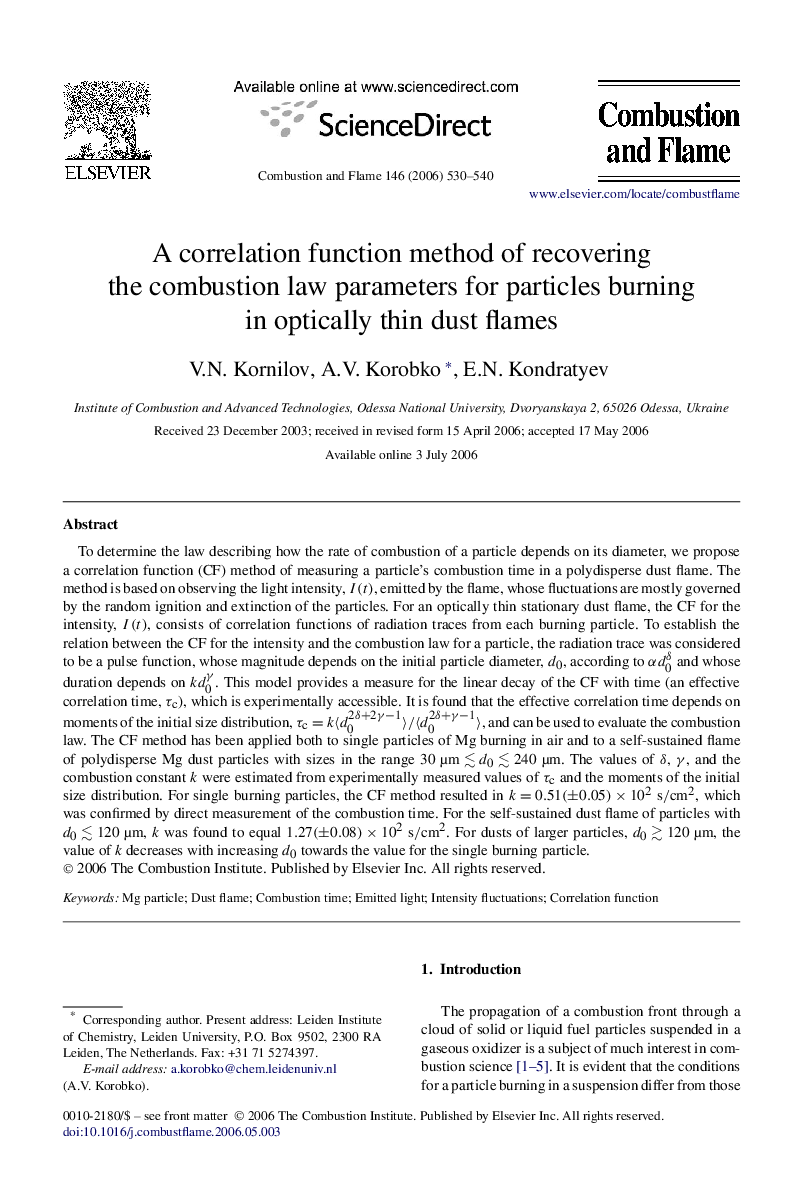| کد مقاله | کد نشریه | سال انتشار | مقاله انگلیسی | نسخه تمام متن |
|---|---|---|---|---|
| 167501 | 457864 | 2006 | 11 صفحه PDF | دانلود رایگان |

To determine the law describing how the rate of combustion of a particle depends on its diameter, we propose a correlation function (CF) method of measuring a particle's combustion time in a polydisperse dust flame. The method is based on observing the light intensity, I(t)I(t), emitted by the flame, whose fluctuations are mostly governed by the random ignition and extinction of the particles. For an optically thin stationary dust flame, the CF for the intensity, I(t)I(t), consists of correlation functions of radiation traces from each burning particle. To establish the relation between the CF for the intensity and the combustion law for a particle, the radiation trace was considered to be a pulse function, whose magnitude depends on the initial particle diameter, d0d0, according to αd0δ and whose duration depends on kd0γ. This model provides a measure for the linear decay of the CF with time (an effective correlation time, τcτc), which is experimentally accessible. It is found that the effective correlation time depends on moments of the initial size distribution, τc=k〈d02δ+2γ−1〉/〈d02δ+γ−1〉, and can be used to evaluate the combustion law. The CF method has been applied both to single particles of Mg burning in air and to a self-sustained flame of polydisperse Mg dust particles with sizes in the range 30 μm≲d0≲240 μm30 μm≲d0≲240 μm. The values of δ, γ, and the combustion constant k were estimated from experimentally measured values of τcτc and the moments of the initial size distribution. For single burning particles, the CF method resulted in k=0.51(±0.05)×102 s/cm2k=0.51(±0.05)×102 s/cm2, which was confirmed by direct measurement of the combustion time. For the self-sustained dust flame of particles with d0≲120 μmd0≲120 μm, k was found to equal 1.27(±0.08)×102 s/cm21.27(±0.08)×102 s/cm2. For dusts of larger particles, d0≳120 μmd0≳120 μm, the value of k decreases with increasing d0d0 towards the value for the single burning particle.
Journal: Combustion and Flame - Volume 146, Issue 3, August 2006, Pages 530–540